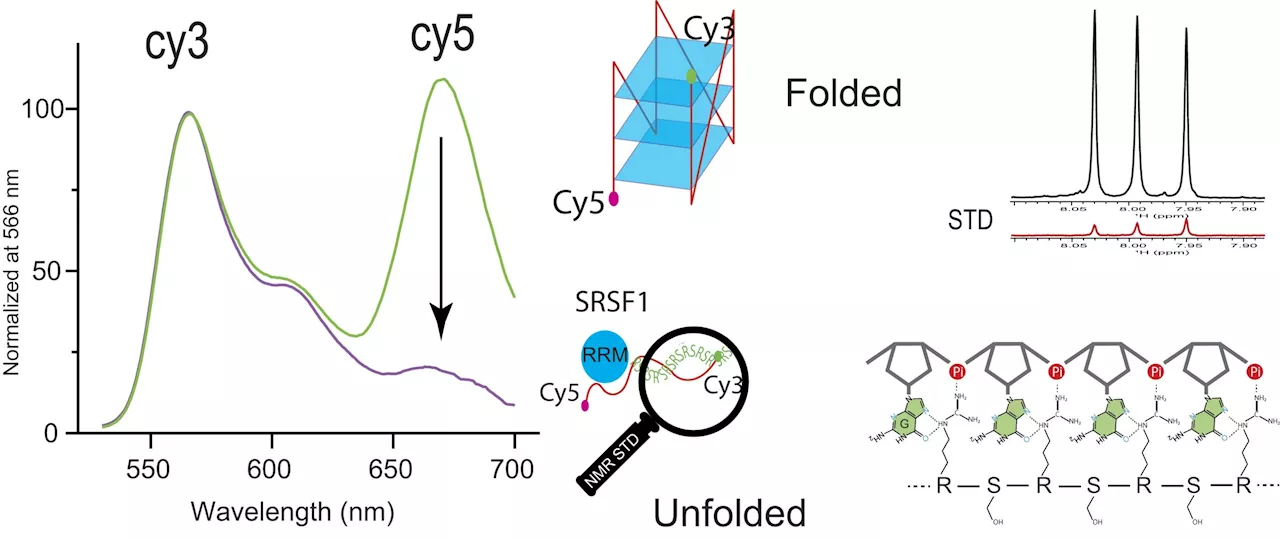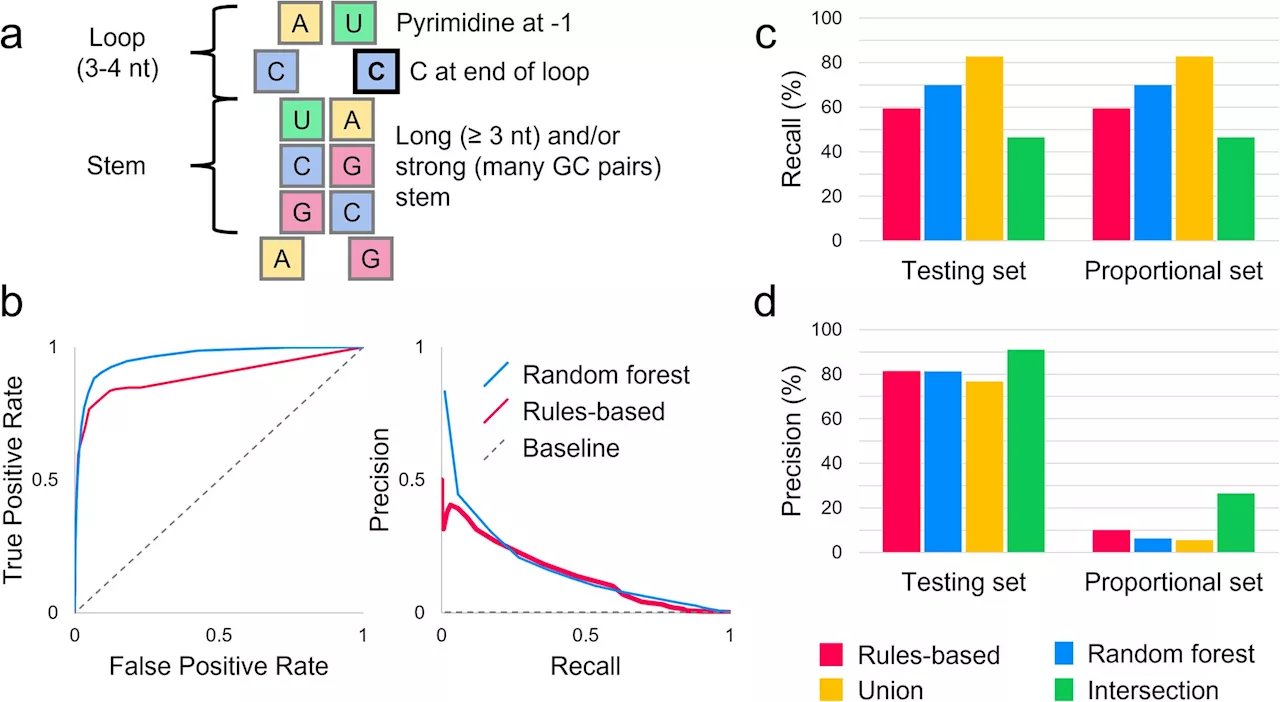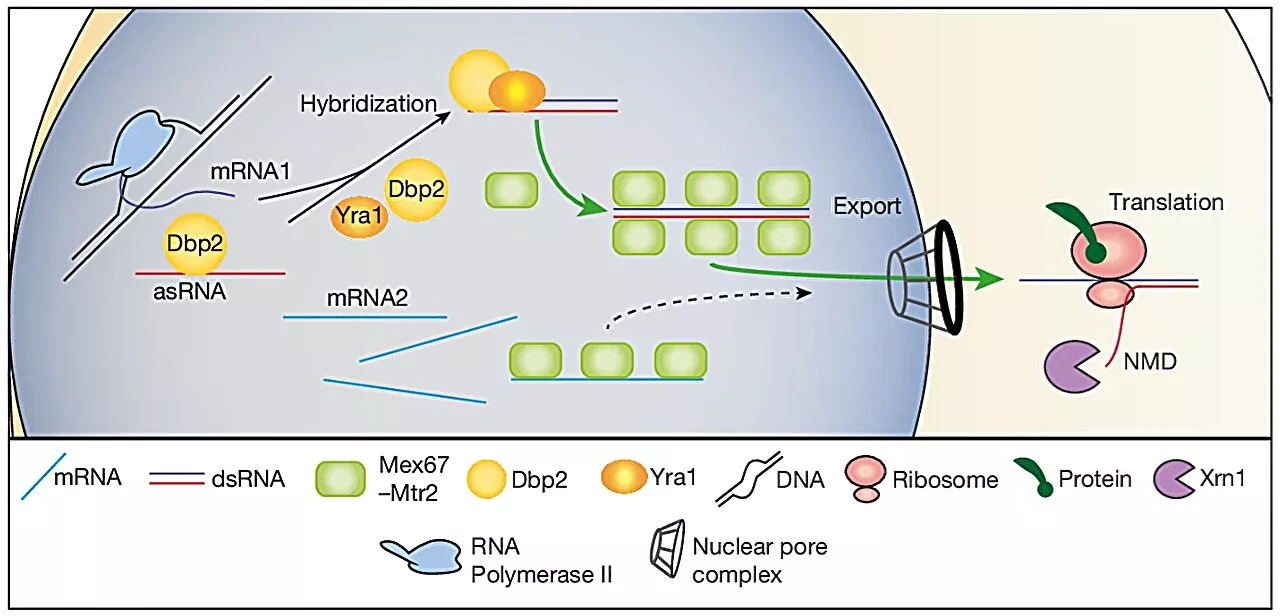Researchers have harnessed a bacterial immune defense system, known as CRISPR, to efficiently and precisely control the process of RNA splicing. The technology opens the door to new applications, including systematically interrogating the functions of parts of genes and correcting splicing deficiencies that underlie numerous diseases and disorders.
Researchers at the University of Toronto have harnessed a bacterial immune defense system, known as CRISPR, to efficiently and precisely control the process of RNA splicing.
Exons can be alternatively spliced, such that the regulation and function of the approximately 20,000 human genes that encode proteins are greatly diversified, allowing the development and functional specialization of different types of cells. "Our new effector protein activated alternative splicing of around 90 percent of tested target exons," said Li."Importantly, it is capable of simultaneously activating and repressing different exons to examine their combined functions."
"We have developed a versatile engineered splicing factor that outperforms other available tools in the targeted control of alternative exons," said Taipale, also principal investigator on the study, Canada Research Chair in Functional Proteomics and Proteostasis, Anne and Max Tanenbaum Chair in Molecular Medicine and associate professor of molecular genetics at the Donnelly Centre and Temerty Medicine.
Human Biology Medical Topics Autism Learning Disorders Caregiving Biochemistry Organic Chemistry Medical Technology
France Dernières Nouvelles, France Actualités
Similar News:Vous pouvez également lire des articles d'actualité similaires à celui-ci que nous avons collectés auprès d'autres sources d'information.
 Researchers develop RNA-targeting technology for precisely manipulating parts of human genesResearchers at the University of Toronto have harnessed a bacterial immune defense system, known as CRISPR, to efficiently and precisely control the process of RNA splicing.
Researchers develop RNA-targeting technology for precisely manipulating parts of human genesResearchers at the University of Toronto have harnessed a bacterial immune defense system, known as CRISPR, to efficiently and precisely control the process of RNA splicing.
Lire la suite »
 Researchers uncover protein SRSF1's uncommon ability to bind and unfold RNA G-quadruplexesRNA transcription is the genomic process in which a cell produces a duplicate of a gene's DNA sequence. In a study published in Nucleic Acids Research, University of Alabama at Birmingham Department of Chemistry Professor Jun Zhang, Ph.D.
Researchers uncover protein SRSF1's uncommon ability to bind and unfold RNA G-quadruplexesRNA transcription is the genomic process in which a cell produces a duplicate of a gene's DNA sequence. In a study published in Nucleic Acids Research, University of Alabama at Birmingham Department of Chemistry Professor Jun Zhang, Ph.D.
Lire la suite »
 Researchers find RNA editing sites likely play a more significant role in genetic diseaseNew findings by University at Buffalo researchers reveal that RNA editing may play a larger role in human biology and in the development of human disease than has generally been understood.
Researchers find RNA editing sites likely play a more significant role in genetic diseaseNew findings by University at Buffalo researchers reveal that RNA editing may play a larger role in human biology and in the development of human disease than has generally been understood.
Lire la suite »
 Non-coding RNA acts as 'superhighway' for gene expression, study findsThe function of non-coding RNA in the cell has long been a mystery to researchers. Unlike coding RNA, non-coding RNA does not produce proteins—yet it exists in large quantities.
Non-coding RNA acts as 'superhighway' for gene expression, study findsThe function of non-coding RNA in the cell has long been a mystery to researchers. Unlike coding RNA, non-coding RNA does not produce proteins—yet it exists in large quantities.
Lire la suite »
 How cells boost gene expression | ScienceDailyThe function of non-coding RNA in the cell has long been a mystery to researchers. Unlike coding RNA, non-coding RNA does not produce proteins -- yet it exists in large quantities.
How cells boost gene expression | ScienceDailyThe function of non-coding RNA in the cell has long been a mystery to researchers. Unlike coding RNA, non-coding RNA does not produce proteins -- yet it exists in large quantities.
Lire la suite »
 Tardigrade genes edited with an advanced CRISPR techniqueLaura is a science news writer, covering a wide variety of subjects, but she is particularly fascinated by all things aquatic, paleontology, nanotechnology, and exploring how science influences daily life. Laura is a proud former resident of the New Jersey shore, a competitive swimmer, and a fierce defender of the Oxford comma.
Tardigrade genes edited with an advanced CRISPR techniqueLaura is a science news writer, covering a wide variety of subjects, but she is particularly fascinated by all things aquatic, paleontology, nanotechnology, and exploring how science influences daily life. Laura is a proud former resident of the New Jersey shore, a competitive swimmer, and a fierce defender of the Oxford comma.
Lire la suite »
